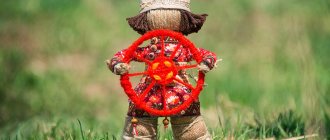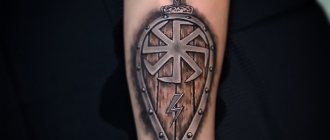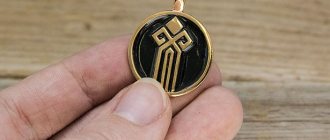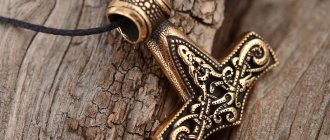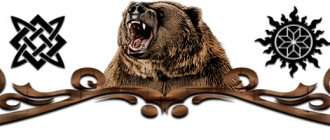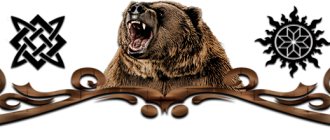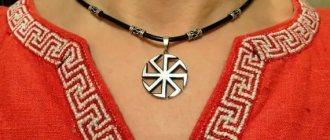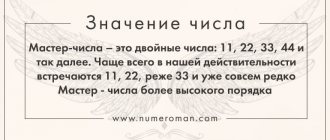Kolovrat symbol of the Slavic sun god
The most popular Slavic symbol of the Sun is Kolovrat.
It is composed of eight rays radiating out from a central point. Moreover, the ends of these rays close, forming a circle. And the illusion of this circle-sun moving clockwise is created. That is, this Slavic symbol of the Sun perfectly and accurately reflects the main celestial body.
Where did such an interesting name come from? The word "colo" means "circle". And “vrat” means “rotation”. Literally it turns out - rotation of a circle. The symbol of the Slavic Sun, or Kolovrat, reflected the most important role of this celestial body in people's lives.
The Slavs who used Kolovrat as a talisman believed that it gave a lot of good things:
- Fertility of the land, and, consequently, a rich harvest.
- The strength and energy of the Sun itself.
- The victory of good, the forces of light over evil.
- Health of body and strength of spirit.
- Protection from everything bad.
- Good luck in good deeds and endeavors.
However, the Slavic Kolovrat is not only a symbol of the Sun. It also symbolizes the eternity of life, constant movement, the infinity of the Universe. It used to be found on household items, kitchen utensils, and also as a pattern on embroidery. Even on the weapons and armor of the warriors, Kolovrat was depicted.
Today you can easily buy yourself a talisman in the form of Kolovrat. They are made from different materials: wood, silver, gold, copper, brass and others. You can wear the amulet around your neck as a pendant, or as a ring.
What the Kolovrat amulet will give its owner:
- Will protect you from the evil eye and damage.
- Will make him strong in spirit and body.
- Will guide you on the right path.
- Will give optimism, faith in goodness.
- Will save you in any difficult situation.
Of course, it will bring both the fertility of the land and a good harvest. It’s just that for many today this is not as relevant as for our distant ancestors.
Symbol of the Slavic Sun in the face of the gods
However, besides Kolovrat, there were other Slavic symbols of the Sun. Most often they personify the gods of the Sun: Yarilo, Khors, Dazhdbog and others.
Here are the most common and popular:
Solstice. This is a very powerful symbol, as it combines the powers of the three Sun gods: Yarila, Dazhdbog and Khors. Another name for Solstice is Thunderstorm. In appearance, the symbol is similar to Kolovrat, only the movement of the rays is directed counterclockwise and there are six rays in it. The solstice represents powerful positive and creative energy. The Magi used it to control the elements.
Also, the Slavic Solstice is the embodiment of the winter and summer solstices. These periods of the year were considered very important. Where was the Solstice depicted? Most often on the walls of the house and door frames. In this way, the Slavs believed, evil and misfortune would not be able to enter their home.
Svaor-solntsevrat is a Slavic symbol that reflects the movement of the sun across the sky. Associated with the god Yarilo. Symbolized the purity of soul and thoughts. The solstice svaor had four “rays” directed counterclockwise. More often depicted in yellow on a red background.
Horse is a symbol of the Slavic sun god Horse. It is designed to protect a person from all sorts of negativity. Horse gives a person good luck in his affairs, in love.
Yarovik is also a symbol associated with the god Yarila. Belongs to the protective ones. Yarovik protected people's households, crops, and livestock from fires, theft, disease, rot, and damage. It would seem like a universal amulet! The symbol was a kind of battery that accumulated solar energy. It was often carved on the doors of barns, barns, stables and other buildings.
But Yarovik was never a decoration for clothing or household items.
An important feature of the symbol was that it worked through the prism of the owner’s life. If the owner lived according to conscience and justice, was hardworking and worked for the good of the Family, then Yarovik “worked”
Otherwise, there was no need to expect any effect from the solar amulet symbol.
Yarovrat is a symbol of Yarila the sun. Since it controlled flowering and favorable weather conditions, this symbol was common among the Slavs. it was carved on wooden parts of agricultural tools: on a plow, on sickles, on scythes.
It turns out that the ancient Slavs had enough symbols personifying the Sun. Moreover, we have considered the most basic ones.
All of them resemble the real Sun in appearance: lines extend from a central point (straight and broken, with or without fancy curls), which radially go, like sun rays, in different directions.
And it is also important that usually on embroidery or other colored patterns these signs were red. After all, the Sun is the main star of the Universe, which is heated to the limit, red-hot, in order to give its light and warmth to all living things.
Kolovrat and the fascist swastika
Some scientists and artists say that the solstice is a sign of the fascists. This is wrong. Despite the similarity of the images, the Kolovrat is a native Slavic symbol that brings goodness and the energy of the sun.
It is possible that the Nazis borrowed this amulet and made it their trademark. This is understandable, because since ancient times people have honored and worshiped the sun. Fascist Germany personified itself with the Divine, a higher power, and chose the solstice as confirmation.
The initial energy of the solstice is kind and bright. Kolovrat personifies prosperity and faith. The talisman cannot tolerate lies or unclean thoughts. It was believed that an evil person could die if he wore this symbol.
Solstice symbol meaning
Solstice refers to sacred Slavic signs that were of great importance for pagans
Modern neopagans also pay considerable attention to such symbolism. This is a solar sign, that is, directly related to the Sun and its power
The Slavic Solstice is also considered one of the most powerful amulets among other swastika symbols. It combines the symbolic aspects of three Slavic gods at once - Khors, Dazhdbog and Yarila. Perhaps Rod also has some relation to the Solstice symbol.
Like most Slavic swastika symbols, the Solstice has two aspects. The meaning of the amulet with it will depend on the direction of movement of the image - clockwise or counterclockwise. It is on this basis that different types of solstice are distinguished.
But first of all, the symbolism of the Solstice lies precisely in its original meaning - solar festivals that occurred on the days of the solstice or equinox. There are, however, several different points of view here, which depend on one interpretation or another. Some believe that the word “solstice” itself is derived from “turn.” That is, the day of the solstice, when the sun, reaching the highest, or vice versa, the lowest point in the sky, turns its movement. Others believe that the solstice refers to the equinoxes, since on this day it returns to the summer or winter state, and the main root in this case is “gate,” that is, return.
There is also debate about the external image of the solstice amulet. Some Slavic scholars believe that it should have six rays, as well as months of multidirectional movement of the Sun, which unites it with the symbol of Perun. Others say that there should be eight rays - according to the number of solar and lunar holidays.
Types of tattoos and their placement
A tattoo is an original way to express and show your individuality, highlight your appearance and character. And to choose a tattoo, the masters offer a large number of sketches and advise where this or that symbol will look better. The black sun can also be seen on various parts of the body and in many variations:
- A tattoo made on the chest or arm may indicate membership in a certain group of people, and its color corresponds to the name of the luminary.
- A symbol similar to a sunrise is applied to the chest, hand, wrist, forearm or elbow and signifies rebirth.
- The image can be drawn with the moon - a female version of the tattoo, where the moon shows the beginning of a woman, and the sun is masculine, together they mean the unification of two principles. This image is applied to various parts of the body, but the most popular are the chest and shoulder blades.
- You can find a symbol that depicts the sun and runes, the original version of the symbol, the meaning of such an image cannot be guessed just like that, it is individual for each person. The symbol is found on men's shoulders, arms or neck.
- A ring in the shape of the sun with flying seagulls is lost youth, another female version of the tattoo, which is found on the hands.
- A sign with rays depicted on the hands, shoulders, chest means that the person was associated with theft and may have been sitting, thus he shows his authority.
- The ornament can also be printed with other symbols, for example, in a composition with a lotus or sunflower. Associated with sunlight and cleanliness.
- The image on the forehead means the third eye.
Black Sun Tattoo Sketches
History of the origin of the sign
Signs symbolizing the sun could be found in almost any ancient culture. And yet the most common symbolism of the sun was among the ancient Slavs. Their life was literally imbued with the significance of the sun and its cycle. All holidays and important dates were tied specifically to the luminary. The sun for the Slavs is strength, energy, fertility and life. Therefore, it is not at all surprising that it was his symbol, the Kolovrat, that was so widespread in the everyday life and Vedic rituals of the Russians.
During archaeological excavations, the solstice was found on the ruins of buildings, parts of infrastructure, items of clothing and everyday life of the inhabitants of Ancient Rus'. This symbol was on almost every item of the Slavs, who believed that it could bring them luck and prosperity. A special role was given to Kolovrat on the clothes, weapons and banners of warriors. It was believed that he would bring victory, glory to the soldiers and protect them from death. The banner with the solstice terrified enemy tribes, who often fled.
After the Baptism of Rus', which was not without the shedding of blood and the destruction of relics, the Kolovrat, like other ancient Slavic symbols, was banned.
Thunderstorm
The main meaning of the Thunderstorm amulet is protection from aggressive weather, i.e. from thunderstorms, blizzards, downpours, hail and hurricanes. Therefore, his image was applied to houses. It was believed that the Thunderstorm symbol gave magicians and priests the opportunity to even command the elements and change the weather at their discretion.
In addition, this amulet protects a person from evil witchcraft, envious people and rumors. Thunderstorm helps to establish a connection with ancestors, gain their wisdom and strength.
This amulet has powerful energy that gives a person vitality, pushes him to accomplish feats and helps him work and create. In addition, with its help you can easily achieve your goals, but only if they are aimed at good deeds.
This amulet is recommended to be worn by people in military professions. It is believed that it will provide protection in battle and help defeat enemies. In addition, such an amulet is suitable for people whose activities are related to the elements: firefighters, pilots, sailors, etc. It will protect both during and after work.
It is still relevant to apply the image of the Thunderstorm amulet on the walls of your home. It will protect the house from lightning, fire and evil forces. In addition, thanks to the amulet, people with evil thoughts cannot enter the home.
It is recommended to paint the image of the amulet on the walls of the house with red, yellow or gold paint. These colors will enhance the effect of the amulet. You can wear the amulet on yourself in the form of jewelry. This could be a pendant, ring or earrings. Most often they are made of gold or silver. The amulet can also be carved from wood. To do this, use wood such as ash, pine, beech or oak. It is these trees that will enhance the effectiveness of the amulet.
Solstice is one of the most powerful and revered amulets of the ancient Slavs, which is still valued in our time. If used correctly, it will give a person its energy and protection.
How to choose an amulet
The solstice is best made from materials that can transmit the energy of the Sun. Therefore, noble metals are used for it - gold and silver.
You may be interested in: The meaning of the Star of Rus' amulet (Square of God Svarog)
Gold carries solar energy, and silver has the powerful ability to protect a person from the influence of the forces of evil.
If you decide to choose or make a wooden amulet, then pay attention to these types of wood:
- Oak. This tree personifies masculine strength and fortitude. It will help you cope with stress and improve your health.
- Pine. It will attract money, protect against evil forces, improve health and help cope with illnesses.
- Ash. Will awaken the ability to clairvoyance and open the door to secret knowledge. It belongs to the element of water, so it will help on sea voyages and protect against drowning.
- Beech. Suitable for creative people. It will give you inspiration and help you develop your talent.
The amulet can be attached to a metal chain or thread made from natural materials. You can use it on rings and bracelets, and women can make or buy earrings and pendants with it.
A popular type of this amulet is a brooch that can be pinned to the very heart.
You can also embroider the Solstice sign on clothes or draw it at home. For this, bright, sunny colors are used - red, gold, yellow.
Winter Solstice Day and the symbol of the holiday
The Winter Solstice, also called Yule, Kolyada or Chernobog's Night, despite its gloominess, was a positive holiday. Although it fell at the very beginning of winter, when the coldest days were still ahead, it signified the positive movement of the Sun and was a bright hope for warming. Winter Solstice Day was traditionally celebrated on a grand scale. Due to the fact that most of the work had already been done and there was plenty of supplies, people preferred to celebrate this day brightly and cheerfully.
It was believed that on this day the god Kolyada brings gifts to children. At the same time, on the same day, the most terrible witchcraft was happening. Chernobog, the patron of dark magic and evil forces, although he was not a uniquely negative deity, sought to show his strength that night. The evil Frost went hunting in the forests, taking in unlucky travelers who decided to stay outside the villages and towns at night. To avoid such an unpleasant fate, most of the festivities went on until the morning - no one wanted to go to bed at a time when evil forces were triumphant and had the greatest power.
The Winter Solstice symbol was clearly depicted as a backward-directed sign. Its meaning is to emphasize all the “dark” sides of the soul and character. But, at the same time, he did not carry negativity in himself, but only reminded that without darkness there can be no light, and without evil there can be no good. This sign was often used by sorcerers and warriors who dedicated themselves to Chernobog. At the same time, it was considered a very powerful amulet, since it not only protected the owner, but also severely punished any offender.
Celebrating the Summer and Autumn Solstice
These holidays were not so widespread, but still had important meaning for the ancient Slavs.
Summer Solstice refers to the Summer Solstice, which celebrated the longest day and celebrated the power of sunlight.
It was called Kupava, and later became Kupala Day. Before the holiday, people washed themselves clean and wove wreaths. On the day of the celebration, they lit bonfires and jumped over them, and at night they tried to find the Fern Flower in order to appeal to Kupala itself. The symbol of the Summer Solstice was Salting.
On the Autumn Solstice, the Slavs celebrated a rich harvest, and thanked the goddess of fertility Lada for it. In the autumn days, people sought to celebrate a wedding so that Lada would take this marriage under her protection. On this day, the tables were set with pies with cabbage, apples and lingonberries.
According to tradition, they baked a huge pie the size of a man, behind which the priest was hiding. If it was not visible because of the pie, it was believed that the harvest that year was rich.
You may be interested in: Amulet star of England: The meaning of the symbol with a sword, featherweed and fern flower
Before the New Year, the Slavs extinguished the old fire in the stove and lit a new one, baked loaves, and decorated the walls of the house with rowan berries, which protected against evil forces. The symbol of the Autumn Solstice was Antisalt.
Ritual of purification of the amulet
Before you start wearing the purchased amulet, you need to clear it of accumulated energy. The metal Kolovrat should be kept in running water for several hours, and then held over the fire 3 times (or over a candle flame).
A wooden or painted amulet can simply be sprinkled with water and then kept in direct sunlight for several hours. The cleansing ritual should be performed several times a year - on the days of the equinox, winter and summer solstice.
If the amulet is cracked, this will indicate that it protected its owner from some kind of misfortune. He has fulfilled his purpose and will no longer be able to protect. You will have to say goodbye to such a talisman, thanking him for his help. You can't just throw away the amulet. The wooden Kolovrat should be burned, the metal one should be buried away from the house. If the amulet is lost, this will also indicate that it has fulfilled its purpose and “left” so as not to cause harm. In this case, there is no need to regret the loss.
After the ceremony, the amulet should be worn for 3 days in a row so that it “gets used” to its owner. In general, it is recommended to wear the Kolovrat amulet often enough for it to work. If it is intended to be removed, then a special place should be reserved for it (for example, a linen bag), in which only it will be stored.
You can wear the Kolovrat amulet with other Slavic amulets, but you should know that being the strongest, it will subjugate all other symbols. As for wearing the solstice with Christian symbols, the possibility of their proximity is completely excluded.
Solstice Cleansing Ritual
If the symbol is made of metal, it should be washed well with ordinary boiled water or brought to the fire for a few minutes. Then put the talisman under the sun's rays. Kolovrat should lie in the sun for at least 12 hours.
If the Kolovrat is made of a material that cannot be heated or washed, it is necessary to put it in table salt for an hour, then under direct sunlight.
The procedure helps to get rid of extraneous energy and saturates the talisman with the original solar power.
The meaning of the Kolovrat symbol
The meaning of the symbol is the infinity of life and space, the change of seasons, day and night, light and darkness. Kolovrat chis mean movement, cyclicity. The name of the symbol comes from the combination of two words “kolo” - circle (sun) and “vrat” - rotation. It was believed that only through endless rotation was the continuation of life possible.
Kolovrat also includes 4 elements (fire, water, earth, air) and 4 seasons (summer, autumn, winter, spring), which are represented on the symbol by eight rays. However, you can find an image of a symbol with a different number of rays, and each such symbol has its own separate designation:
- with four rays symbolizes earthly fire, helping people in life;
- a Kolovrat with six rays, called a thunderstorm, a symbol of worship of the god Perun, a talisman against bad weather and the elements, it was placed on dwellings and temples to protect against lightning strikes and other manifestations of bad weather;
- The eight-rayed Kolovrat was dedicated to the gods Svarog, Dazhdbog and Khorsu, symbolizing the unity of all things, rebirth, justice, wisdom.
Male and female options
In the image of a symbol, not only the number of rays matters, but also in which direction they are directed. Moving in the direction of the sun (clockwise) means:
- pure thoughts;
- protection from dark forces;
- good deeds;
- connection with the highest gods;
- abundance;
- honesty.
The right-handed symbol has traditionally been masculine. This is exactly the sign that was applied to the warriors’ items.
Kolovrat with rays against the direction of the sun (counterclockwise) was called Ladinets and was a female symbol. Such a left-sided, “mirror” movement meant a connection with Navy - the other world, the development of intuition and prophetic abilities. In addition, such a symbol revealed the feminine principle in a girl, helped in love and married life, facilitated childbirth and protected in difficult times.
Often, spouses wore things with both left-hand and right-hand symbols embroidered on them, which denoted their unity. This combination created a magic circle that protected against any dark forces.
Tattoo meaning
The thunderbolt is considered a symbol of the God Indra, who guards the wisdom of heaven. He overwhelms enemies with infrasound, which creates thunder. The symbol has enormous power. Please note that it contains wisdom and will allow you to discover the secrets of the universe. But a tattoo in the form of an amulet can only help people with an open heart and a pure soul. Then she will be able to bring positive energy. If a person has unclean thoughts, he should not get a tattoo.
The meaning of the Thunder tattoo is protection from damage and the evil eye.
The most suitable places for a tattoo are the forearm, back or chest. A tattoo is a symbol of strength, and this tradition comes from ancient times, when people made them to intimidate when attacked. But in modern times it is more of a protective nature.
Gromovik Tattoo
The Thunderer amulet is a symbol of strong and strong-willed people. It is suitable for those who are used to acting and who need protection from ill-wishers. It is important that the owner likes the symbol, and then it can become a good amulet.
In the culture and mythology of peoples
In the culture and mythology of many countries, the days of the winter and summer solstice have mystical significance. One of the most famous traditional names for the winter solstice is Yule (see Wheel of the Year), the day of the summer solstice is called Midsummer [ source not specified 283 days
].
Ivan Kupala
(
Midsummer Day, Kupala Night
) is a folk holiday of the Eastern Slavs, dedicated to the summer solstice and the highest flowering of nature and celebrated on June 24 (July 7).
The timing coincides with the Christian holiday of the Nativity of John the Baptist. In the calendar cycle it is symmetrical to Christmas (Kolyada) [ source not specified 51 days
].
Astronomical information
The position of the Earth in orbit at the moments of: summer solstice (left), winter solstice (right), autumn equinox (front) and spring equinox (behind).
June (summer) solstice. Zones of the Earth with different day lengths are shown in color (northern hemisphere on top)
There are winter and summer solstice. Currently (2010-2025) according to universal time (in other time zones these dates may differ by a day: the date may be a day more, a day less) in the northern hemisphere it is winter
The solstice occurs on December 21 or (before leap years) December 22, and
the summer
solstice occurs on June 20 (in leap years) or June 21.
In the southern hemisphere, on the contrary, the December solstice turns out to be summer,
and the June solstice turns out to
be winter
.
The winter solstice is the shortest day (with the longest night) of the year in the corresponding hemisphere (except for the pole, where the only night of the year lasts half a year, and the winter solstice is the middle of this polar night). The summer solstice is the longest day (with the shortest night) of the year in the corresponding hemisphere (except for the polar region, where the only daylight in the year lasts six months and the summer solstice is the middle of this polar day).
In mid-latitudes, during astronomical winter and spring, the point at which the Sun is at noon (more precisely, at true noon), rises higher above the horizon every day, and on the day of the summer solstice it “stops” and reverses its movement. Then every day it sinks lower and lower, and, in the end, at the moment of the winter solstice, it “stops” again and begins to rise back.
Due to the leap shift, solstice dates in different years may differ by 1-2 days. Traditionally, the moment of the winter solstice is taken as the beginning, and the moment of the summer solstice as the beginning, which is a consequence of the choice for the beginning of either the day of the spring or autumn equinox. The astronomical longitude of the sun at these moments is, respectively, 90° and 270°.
For several days before and after the solstice, the Sun almost does not change its declination, its midday heights in the sky are almost unchanged (the height changes throughout the year according to a schedule close to the bell-shaped top of a sine wave); This is where the name of the solstice comes from. On the contrary, near the dates of the equinoxes, the rate of change in the Sun declination is greatest (~24 arc minutes per day), since this corresponds to the intersection of the sinusoid with the horizontal axis (time). From observations of the heights of the Sun during both solstices, the inclination of the ecliptic plane to the plane of the celestial equator can be determined.
In the culture and mythology of peoples
In the culture and mythology of many countries, the days of the winter and summer solstice have mystical significance. One of the most famous traditional names for the winter solstice is Yule (see Wheel of the Year), the day of the summer solstice is called Midsummer [ source not specified 283 days
].
Ivan Kupala
(
Midsummer Day, Kupala Night
) is a folk holiday of the Eastern Slavs, dedicated to the summer solstice and the highest flowering of nature and celebrated on June 24 (July 7).
The timing coincides with the Christian holiday of the Nativity of John the Baptist. In the calendar cycle it is symmetrical to Christmas (Kolyada) [ source not specified 51 days
].
Material selection and manufacturing
The Kolovrat amulet is intended to improve the life of its owner, fill his life with warmth, light, optimism, and protect him from dark forces.
In ancient times, the symbol was most often embroidered on clothing (on the shoulders and chest). Embroidery was carried out in compliance with certain rules:
- only natural materials (threads and fabric) were used for embroidery, most often they were linen;
- the embroidery should not have knots on the reverse side;
- If the thread got tangled during the embroidery process, the embroidered sign was unraveled and the work started over.
The Kolovrat amulet can be made from any material, preferably natural. Even a drawing made by hand or a sketch printed on a printer (image in jpg, png format) will do. But you cannot make an amulet for yourself. You can ask a blood relative to make it or buy it ready-made.
In addition, the material from which the amulet is made also adds its meaning:
- gold is a material that is not suitable for everyone; gold Kolovrat is recommended to be worn by insecure, indecisive and reserved people;
- silver is a universal material for making amulets, suitable for everyone, it protects against evil forces, increases intuition;
- birch is a material for making women's amulets, helping to reveal feminine qualities, helping to overcome illness, damage and loneliness;
- oak is a masculine material that greatly enhances the properties of Kolovrat and is suitable for people in dangerous professions.
A metal amulet can be hung on a chain made of the same material. It is best to hang a wooden amulet on a linen cord.
Today, along with amulets, tattoos depicting this symbol have become popular. The meaning of the Kolovrat tattoo is the power of the sun, protection by Slavic gods, vital energy. This tattoo is usually chosen by men, since it is believed that it increases male strength. Naturally, most often such tattoos are found among people who are interested in ancient Slavic culture.
Both the amulet and the tattoo, as is commonly believed, will protect only an honest person with pure thoughts. They will not help people who wish others harm and may even harm them.
Material for making a talisman
The symbol can be made of any material. Wood or metal – it doesn’t matter, the main thing is the image itself, its energy.
It is best to wear the talisman around the neck or in the form of a brooch, closer to the heart. It is allowed to hang on a silver (gold) chain or a cord made of fabric. Preference is given to linen. He is a sacred conductor of goodness.
What will happen in your personal life in 2021?
Cupid has a lot to encourage, but do you fall into... Read more...
Fortune telling on cards: find out what the future promises for you with an accuracy of 77%
Who among us has not dreamed of receiving an answer to an exciting... Read more...
Before putting on the amulet, it is necessary to carry out a mandatory cleansing procedure.
Spring Solstice holiday and symbolic amulet
Spring Solstice, or Maslenitsa, is one of the most ancient and vibrant Slavic holidays, on which winter ends. It was so popular that it has remained virtually unchanged even to our time. And even the thousand-year attempts of the Christian church to get rid of such a pagan heritage did not prevent this. Of course, now the date of Maslenitsa has shifted - in the past it was celebrated exclusively on the day of the spring equinox. But the holiday traditions themselves remained unchanged.
Definitely, the Spring Solstice as a symbol has rays directed towards the salt. That is, clockwise, in the direction of the sun. On this solemn day, special clothes were even prepared, decorated with such signs, and corresponding celebrations were held. Each of the Maslenitsa traditions contains a reference to the solar movement.
For example, everyone knows the round dances that directly signified the solstice. The pancakes that are baked on Maslenitsa also symbolize the circle of the sun. Most Slavic holidays were in one way or another connected precisely with various hypostases, characteristics and attributes of the Sun.
External image and description of the Gromovnik amulet
Reference! The six-ray symbol was traditionally used in house carvings. Its color is bright, fiery. Gromovnik belongs to the martial art.
The six-ray sign is most often depicted with straightened ends. But sometimes there are options with pointed ends. The sign can be depicted either rotating with the Sun or against it.
The amulet is made from such types of wood as birch, maple, oak and ash. In wooden form, it can have the shape of a sun, in the central part of which there is a sacred pattern.
The wooden amulet is treated with flax oil or natural varnish. The product can also be made of metal - silver, brass, cupronickel. All these materials have equal strength.
Gromovik
The Thunderer amulet is a male amulet, so representatives of the fair sex cannot use it. The fact is that the energy of this talisman is destructive for women, so Gromovik can change her life far from for the better. Among the ancient Slavs, only warriors had the right to wear it. However, later the concept changed, and the amulet began to be used in everyday life.
The meaning of this amulet is that it protects a person from evil forces. The amulet also preserves his health and life. Thunderer protects a person from any evil witchcraft and even from people whose thoughts are unclean. It is believed that it makes a special sound that only evil people hear. Therefore, they bypass both the owner of the amulet and his house. This sound is made by the deities: Yarilo, Dazhbog and Khors. For people with a kind heart and bright thoughts, this thunder is not heard. It gives them protection, attracts good luck and keeps them healthy.
It is believed that this amulet will give good luck in battle and also save the life of its owner. Therefore, his image can be applied to military equipment.
It can be worn on oneself in the form of jewelry for protection from evil forces and good luck in business. The amulet will also give a divine blessing that will help in everything. In addition, the image is applied to the walls of the home or placed above the entrance to the house. Thanks to this, evil people will not be able to get into the housing and troubles, misfortunes, etc. will not penetrate.
The meaning of the amulet
The amulet is a symbol that resists criminals and enemies. If they see him, they begin to feel a sense of fear. If good people meet the amulet, they feel the support of the Gods.
The magical power of the talisman lies in the following - it is able to protect its owner from natural elements - blizzards, thunderstorms, downpours. He helps the Magi to pacify natural forces. The symbol also makes it possible to survive in battle. The power of the talisman allows its owner to achieve his goal and find himself in creativity.
It is worth saying that there is no historical confirmation of the functional purpose of the symbol. However, it is precisely established that it was used in the process of decorating Slavic-Aryan temples. This is reflected in the works of chroniclers of the Middle Ages.
The meaning of the Solstice symbol
The meaning of the Solstice amulet lies in the solar energy that it gives to a person to protect and nourish his own strength. However, first of all, Solstice is the winter and summer solstice among the Slavs, or rather their holiday. Based on this, this symbol is divided into two types:
- Salt it. In this case, all the rays are bent to the right, i.e. clockwise or according to the movement of the heavenly body. This sign of the Solstice amulet means that summer will soon come, i.e. All living things will awaken after winter hibernation. This species is called Gromovik.
- Anti-salt. In this sign, all rays are bent to the left, i.e. counterclockwise or against the movement of the sun. Such a Solstice means that winter will soon come. All nature will “fall asleep” until summer. This sign is called Thunderstorm.
There is an opinion that the winter solstice has negative energy, and the summer solstice has positive energy. However, this is not an entirely correct point of view.
The fact is that the ancient Slavs perceived winter and summer with the same mood, i.e. they rejoiced in both winter and summer. Consequently, the energy of the Solstice in both cases will be positive, differing only slightly in direction, which we will discuss below.
The ancient Slavic amulet, whose name is Solstice, is very often confused with other amulets due to the similarity of the image. These include Ladinets, Kolovrat and Kolyadnik. However, this cannot be done, since all talismans have different meanings. So, this amulet differs from Kolovrat in that it has eight rays. The difference with other talismans is that the Solstice has all rounded edges.
The Slavs wore all the symbols of the Sun on themselves in the form of decorations, applied them to their homes to protect them from misfortune, on dishes, etc. Next, we will tell you how and to whom to wear the Grozovik and Gromovik and find out what their meaning is.
Right-handed and left-handed image of rays
The basis of the symbol is always the same - it is a circle (sun), from which curved lines (rays) emerge. Lines can move in different directions, this was also important.
- Movement to the right meant that the owner of the sign had pure thoughts. Such a talisman is chosen by an open person, devoid of deceit. Basically, male warriors preferred to wear it, demonstrating to the enemy the fairness of the upcoming battle.
- If the rays are directed to the left, the Kolovrat personifies the world of the unknown. It reveals a person's gift, hidden from prying eyes. Improves intuitive perception, reveals prophetic abilities. At the solstice, with the rays directed to the left, women made their choice.
